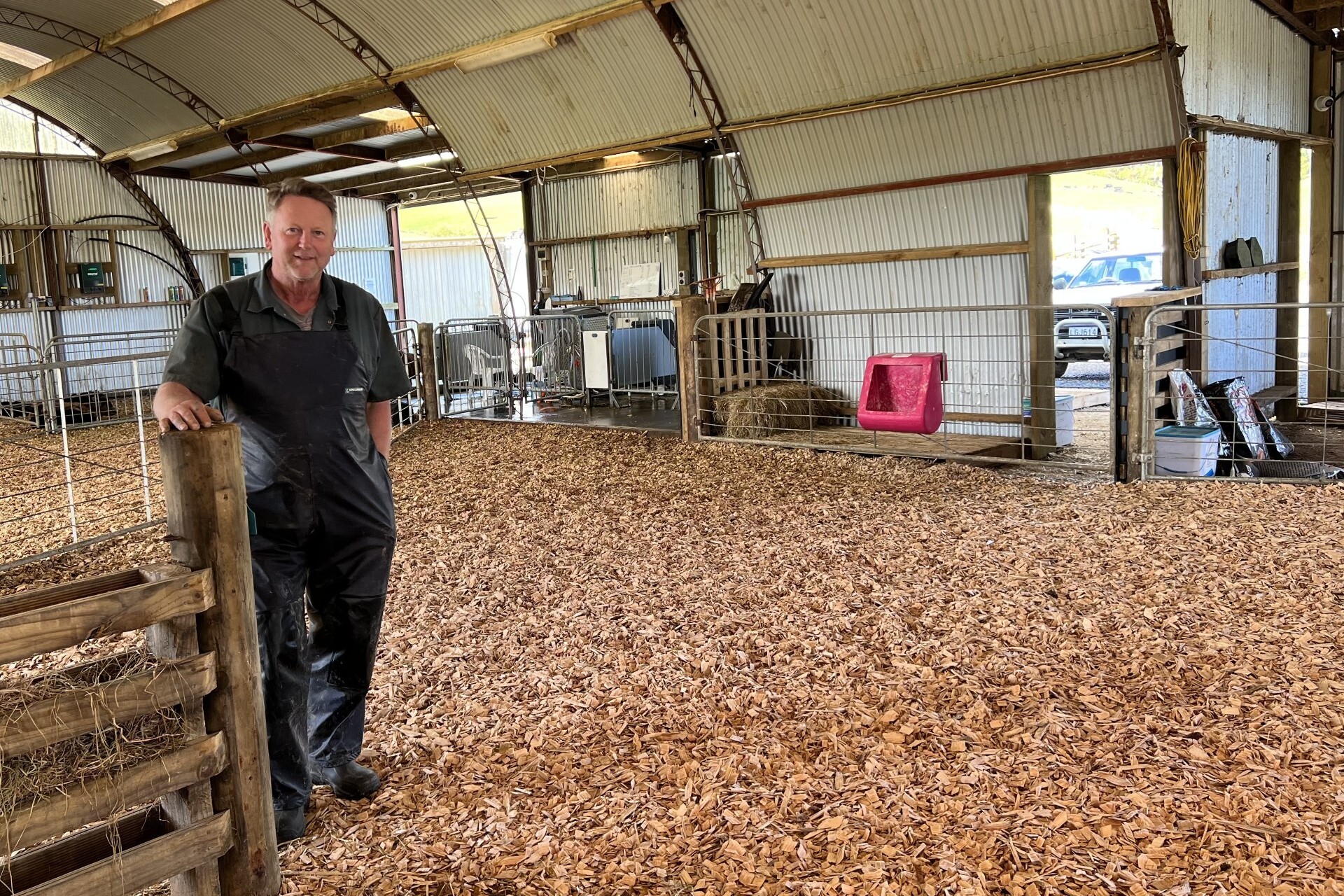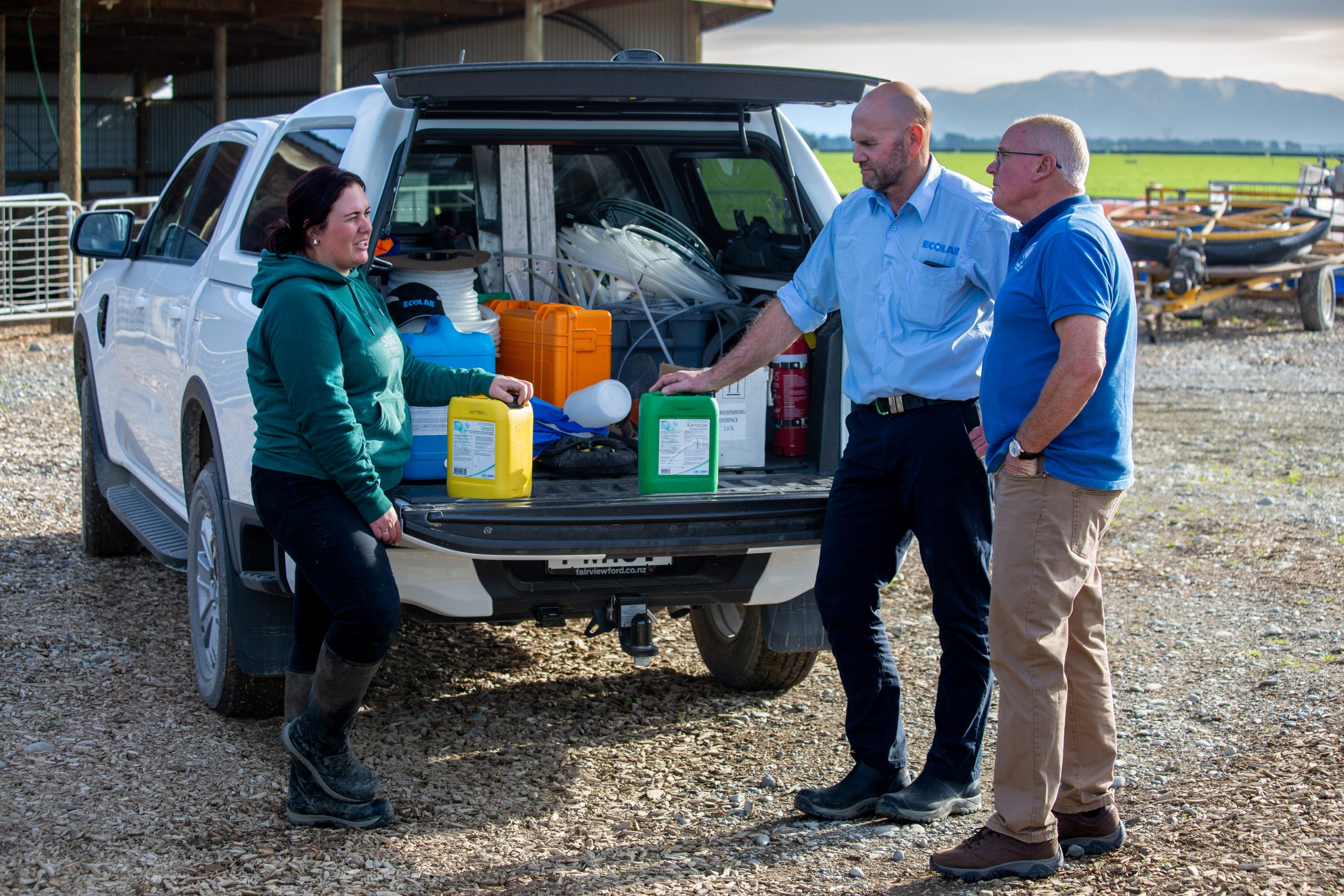Driver Mike Shaw tells DairyNZ Developer Jac McGowan why carefully selecting and preparing cows for transport is so important.
With so much on our minds, it’s easy to think that once cull cows are loaded and heading to their destination, the job’s done. However, we have a responsibility to protect our cows’ welfare beyond the farm gate.
With this in mind, and being a farmer myself, I went along for the ride with Mike Shaw, a driver with Midlands Rural Transport, to find out what happens after cows leave the farm.
I joined Mike just north of Taupo at 8am for the drive to Te Aroha. That’s usually a two-hour trip, but we’re picking up cattle from 10 locations, so the whole journey will take 10 hours.
Several farms are truck-only, meaning Mike must drop the trailer before going on to the farm, then collect it again. Some farms have cattle with vet certificates. Mike considers this, as well as animal size and breed, when planning his route.
At the first farm we wait half an hour because someone slept in. In several places we are slowed or redirected by roadworks. Mike says transporters and farmers are generally understanding about delays because there’s usually a good reason. “But being offered a cup of tea makes waiting easier.”
Mike jokes about farmers quietly disappearing when they hear the stock truck coming, but says he would really like farmers to stick around.
“Someone being there is the most important thing,” Mike says. “It’s easier to sort any issues straight away, and if an animal is difficult to load, help is appreciated.” It’s also important for driver safety.
Transporting livestock is a huge and requires a different frame of mind to transporting freight. The smoother Mike can drive, the better the animals will cart. So, he travels slowly with smooth gear changes (mostly) and leaves big gaps between himself and vehicles in front.
One of the things that’s most different when carting livestock is the attitude around truck breakdowns and traffic delays.
When there are delays it’s a big concern for drivers with stock on, Mike says. Freight guys can sit for 20 hours, no problem, but livestock transport needs to be kept as short as possible. His first thought when he sees a road blocked is whether he can turn around.
When a plant breaks down, they cool the animals in their trucks with water until the plant starts up again.
One aspect of preparation is minerals. Farmers know from calving season that both magnesium and calcium are essential for a cow’s muscle function – and standing on a moving truck for hours is hard work on the muscles. Most farmers give extra magnesium and dry feed such as hay before transport. Mike says it can be noticeable when cows are short of magnesium as they are less-settled and move about more.
Getting cows off green feed at least four hours before the truck arrives gives them a chance to empty out, reducing the risk of effluent spills on the road. Mike explains it’s better for animal comfort too.
“They don’t travel well if they aren’t stood off grass. With a belly full of grass they take longer to settle – they’re more top-heavy and less stable. And more effluent on the truck deck makes it slippery for them.”
I left Mike as he was loading up the last cows at 5pm. Te Aroha was still half an hour away and the first cows had been on the truck since 8.30am. It was eye-opening for me how long a trip ‘just up the road’ can take.
My time with Mike reinforced for me the importance of selecting and preparing cull cows well so they can handle whatever their journey throws at them.
- For more information on transporting stock visit dairynz.co.nz/transporting-stock





